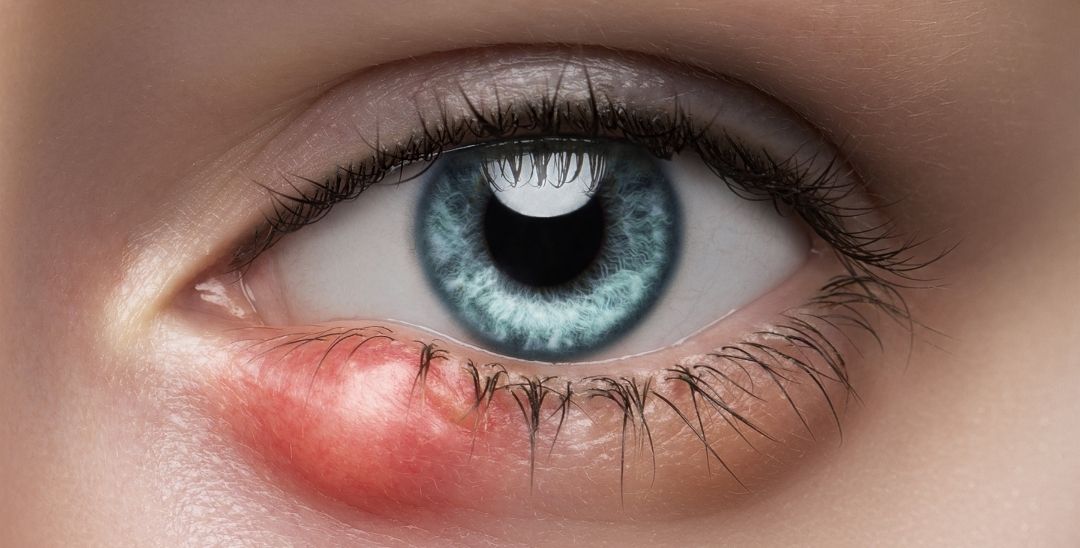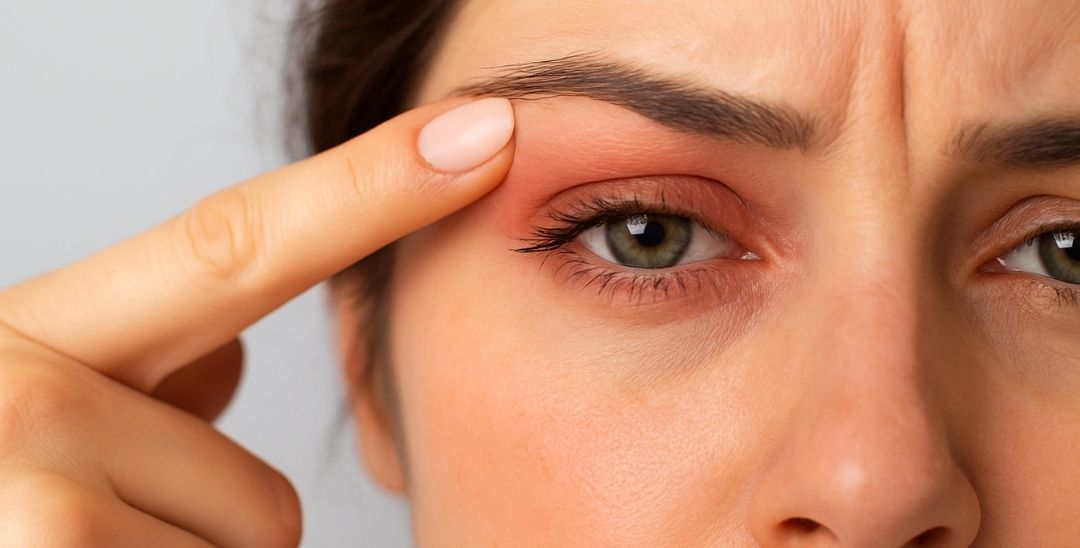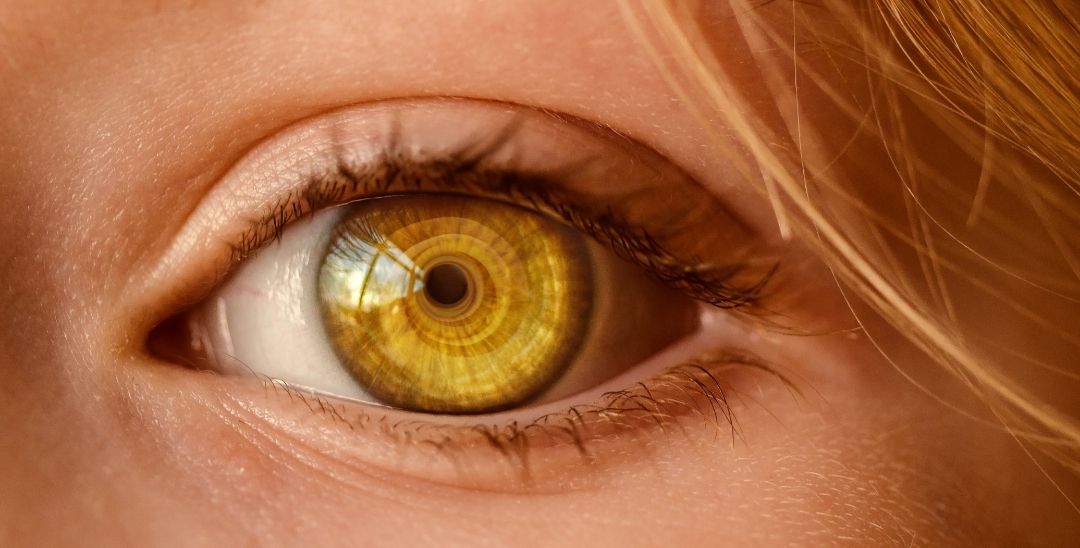What is Dry Eye?
Dry eye is a chronic disease characterized by loss of natural tear film consistency causing prolonged inflammation on the eye’s surface (1). Your natural tears are made up of mucin, lipid and water. When any one of these components is lacking, this causes an insufficient amount of moisture and lubrication of the cornea.
To learn more about Dry Eye Disease, be sure to read Dry Eye: Symptoms, Causes and Treatment.
Inflammation in dry eye disease is multifactorial, but primarily driven by various factors which include environmental triggers, autoimmune responses, and the release of pro-inflammatory proteins called cytokines. These inflammatory processes can lead to damage to the delicate cells of the eye’s surface, worsening discomfort and visual disturbances experienced by patients with the condition.
While dry eye is not curable, there are ways to manage the symptoms and prevent them from affecting or interfering with your daily life and activities. By understanding how inflammation plays a role, you will be more equipped to manage symptoms over time.
How does inflammation play a role?
There are two types of inflammatory responses in the body: the innate (immediate) response and the adaptive response (2). In dry eye disease, both responses are involved, but they differ in their roles.
Innate Response
The innate immune response is the first line of defense against foreign pathogens and is always active at a basic level. It acts as a rapid defense mechanism. In dry eye, the innate response is triggered by things like environmental factors (such as exposure to dry conditions on an airplane, cold outdoor wind, allergens or pollutants). These factors can irritate the ocular surface and activate innate immune cells quickly.
The primary cells involved in the innate immune response in dry eye include epithelial cells, dendritic cells, and macrophages. These cells release pro-inflammatory cytokines which promote inflammation and damage to the ocular surface.
Adaptive Response
The adaptive immune response, on the other hand, is highly specific and develops over time in response to specific antigens. It involves the activation of certain types of white blood cells called T cells and B cells.
In dry eye, the adaptive immune response often has an autoimmune component, where the immune system mistakenly targets the body’s own cells marking them as “toxins” which can further inflammation and contribute to ocular surface damage.
Putting the Two Together
In summary, the innate immune response in dry eye is more immediate and nonspecific, and triggered by external factors. The adaptive immune response is more specific, often involving autoimmunity, and takes time to develop. Both responses contribute to the chronic nature of dry eye disease, leading to ocular surface damage and discomfort.
Managing Inflammation in the Body
There are many ways to manage inflammation associated with dry eye (some more invasive than others):
Diet & Supplements
Dietary influences can play a role in decreasing inflammation in the body and accordingly the risk of dry eye symptoms. Increasing water consumption is first on the list as an easy recommendation, as staying hydrated can improve your body’s ability to produce tears.. Research has also shown that anti-inflammatory diets (such as the Mediterranean diet) help relieve discomfort due to dry eye (and could also improve cardiovascular health) (6).
Omega-3 acids found in fatty fish, flaxseed and walnuts have anti-inflammatory properties and can help to reduce inflammation on the eye’s surface. While there has been recent skepticism about using omega-3 supplementation in dry eye treatment, newer studies are showing benefits to either using omega-3 supplementation along with an already established dry eye management regime (4), or alternatively, using topically applied omega-3 formulas directly on the eye in drop form (5).
It has been well established that omega-3 is beneficial in reducing inflammation in the body, and therefore, is still being recommended by many dry eye specialists. This effect is especially beneficial for patients suffering from systemic diseases like Rosacea, which can cause a characteristic inflammation in the oil producing glands of the eyelids. Omega-3 may also improve the quality of the tear film, making it more stable and less prone to evaporation.
If you’re not regularly consuming omega-3 rich foods (containing both eicosapentaenoic acid (EPA) and docosahexaenoic acid (DHA)), supplementing may be a good idea. Research has shown that supplementing omega-3 has improved dry eye symptoms in some patients (7). Remember that the recommended daily dosing can vary between patients, and not all omega-3 supplements are created equal. This should be discussed with your eye health practitioner.
OTC Remedies
Conventional artificial tear supplementation with over-the-counter drops can be helpful, especially in earlier stages of dry eye disease. Medical grade tear supplementation of preservative-free formulas containing hyaluronic acid or other medical grade lubricants are considered a “step up” for treatment (7). Hyaluronic acid is a naturally occurring anti-inflammatory substance already present in your body: specifically, within the structure of the cornea. As well as being anti-inflammatory, it is an excellent retainer of water and therefore works very well in dry eye therapy. Stronger and more viscous agents are available for more advanced or severe cases.
Hot compresses can help by providing direct heat and physical stimulation to the oil producing glands (meibomian glands) in the eyelids. In addition, cold compresses can provide relief when there is significant inflammation present (this is frequently seen in patients with inflammatory skin conditions like rosacea).
Nighttime protection for the eyes can also minimize inflammatory flare ups. Products such as the Blinkjoy Moisture Retaining Sleep Mask create a moisture rich space over the eyes, hydrating the sensitive eyelid area and preserving drops or ointment throughout the night. Sleeping with a moisture retaining sleep mask may help improve the comfort of your eyes, and is a necessity for those who suffer from exacerbated dry eye symptoms at night or in the morning after waking up.
Medication
There are a few medications in the form of topical eye drops that are formulated to combat inflammation and irritation in the eye which may be prescribed by your optometrist or ophthalmologist. Cyclosporine (brand names Restasis and Cequa) and Lifitegrast (brand name Xiidra) are a few of the primary medications prescribed after less invasive or over the counter treatments have been attempted (9). In cases where someone may be experiencing an acute flare up of dryness, steroid medications can be used for short periods to reduce inflammation.
More novel treatment options like autologous serum drops or platelet-rich plasma drops are also good options, especially in more severe cases. These are nutrient rich formulations made from the body’s own blood which promote healing, balance the tear osmolarity, and can significantly reduce inflammation.
Summary
While all of these individual suggestions are important, they should all be considered as part of a comprehensive approach to dry eye treatment in general. Always consult with your optometrist or ophthalmologist for a personalized dry eye management plan.
Contributors
 Sarah Farrag, OD
Sarah Farrag, OD
Dr. Sarah Farrag is originally from Halifax, Nova Scotia, and is happy to be practicing optometry in her own hometown. She graduated with honors from the University of Waterloo Doctor of Optometry program in June 2015. In addition to routine optometric care, Dr. Farrag also fits specialized rigid and scleral contact lenses for corneal degenerative diseases including keratoconus and post-corneal transplant eyes.

Justin Mendelson
Serial entrepreneur and product development expert, Justin Mendelson has lived with severe dry eye for nearly two decades. When he was at his worst, he used rewetting drops every 20 minutes and wasn’t sleeping longer than an hour at a time without waking up in excruciating eye pain. After many years of struggle, Justin made a commitment to himself and to the millions of people that suffer from eye disease to develop better products for eye health and chronic dry eye relief.
References
- Craig, J. P., Nichols, K. K., Akpek, E. K., Caffery, B., Dua, H. S., Joo, C. K., ... & Stapleton, F. (2017). TFOS DEWS II definition and classification report. The ocular surface, 15(3), 276-283.
- Perez, V. L., Stern, M. E., & Pflugfelder, S. C. (2020). Inflammatory basis for dry eye disease flares. Experimental eye research, 201, 108294.
- Gomes, J. A., & Santo, R. M. (2019). The impact of dry eye disease treatment on patient satisfaction and quality of life: A review. The ocular surface, 17(1), 9-19.
- Luis Rojas, OD (2021). Dry Eye: Where Do We Stand with Omega-3 Supplements?
- Paik, B., & Tong, L. (2022). Topical Omega-3 Fatty Acids Eyedrops in the Treatment of Dry Eye and Ocular Surface Disease: A Systematic Review. International Journal of Molecular Sciences, 23(21), 13156.
- Molina-Leyva, I., Molina-Leyva, A., Riquelme-Gallego, B., Cano-Ibañez, N., García-Molina, L., & Bueno-Cavanillas, A. (2020). Effectiveness of mediterranean diet implementation in dry eye parameters: A study of PREDIMED-PLUS trial. Nutrients, 12(5), 1289.
- Al-Namaeh, M. (2020). A systematic review of the effect of omega-3 supplements on meibomian gland dysfunction. Therapeutic advances in ophthalmology, 12, 2515841420952188.
- Haber, S. L., Benson, V., Buckway, C. J., Gonzales, J. M., Romanet, D., & Scholes, B. (2019). Lifitegrast: a novel drug for patients with dry eye disease. Therapeutic Advances in Ophthalmology, 11, 2515841419870366.
- Haber, S. L., Benson, V., Buckway, C. J., Gonzales, J. M., Romanet, D., & Scholes, B. (2019). Lifitegrast: a novel drug for patients with dry eye disease. Therapeutic Advances in Ophthalmology, 11, 2515841419870366





